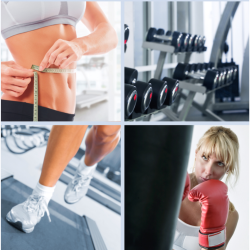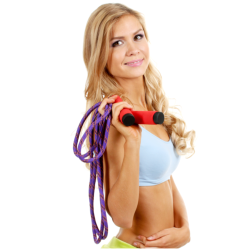There are many different approaches to fitness, weight loss, and exercise. As science progresses and more research studies are conducted, new strategies surface. Additionally, as more people become active and start a fitness program, awareness for different techniques and approaches grows.
Introducing High Intensity Interval Training – HIIT
One such approach is called High Intensity Interval Training “HIIT”. It’s a type of training that was actually pioneered by different people at different times. The training that you see today is an adaptation and combination of the initial approaches.
HIIT is an advanced form of interval training. Interval training consists of putting in a moderate effort for a specific period of time and then cranking it up. For example, interval training for a runner might include running at an 11-minute mile pace for five minutes, followed by 8-minute mile pace for one minute. You’d alternate this intensity level for a few cycles.
HIIT is Like Interval Training on Steroids
There’s no steroid use here but HIIT takes it up a notch and truly increases the intensity. With this type of exercise the athlete puts forth a period of high intensity effort followed by a short rest followed by another period of high intensity. One of the most notable HIIT formats is called the Tabata. It is 20 seconds of intense effort followed by 10 seconds of rest. This is repeated for 8 cycles, or four minutes total.
The Tabata workout can be applied to a number of different exercises. For example, you can squat as many times as you can in 20 seconds, rest for 10 and repeat. You can do pushups, pull-ups, or sit-ups.
You can jump rope or sprint. You can ride your spin bike, row on the rowing machine, or do burpees or lunges. Try the Tabata workout with your favorite movement and experience just what intensity really means.
Another example of HIIT for a runner might be a series of 200-meter sprints followed by 30 second rests. You might sprint on your bicycle for a quarter mile and then slow down to a casual pace to recover. You can apply HIIT to any cardio or strength fitness exercise.
There are numerous considerations before starting a fitness plan that includes HIIT.
Pros and Cons of High Intensity Interval Training
The pros of HIIT are numerous, so we’ll take an in depth look at the research in the first chapter. For now, it’s important to know that HIIT results are astounding.
- Fast weight loss
- Less workout time
- Improved strength
- Improved endurance
- Improved cardiovascular fitness
- Better fat burning
- Decreased abdominal fat
- Decreased insulin resistance
- Reduced risk for cardiovascular disease
So the pros look pretty strong, right? They are. You can truly burn significantly more fat and calories in less time. It means that if you don’t have the time to run for an hour a day but you want the same, or better, results, then HIIT may be right for you.
The Potential Risks of HIIT
With every fitness program and workout, there are risks. The same is true for High Intensity Interval Training. The very nature of the workout means it may not be right for people who have a high risk of a cardiovascular episode. Meaning that if you’ve had a heart attack or are at a high risk for having one, please talk to your doctor before beginning a program like this.
If you are older or have other health complications, it’s also important to talk to your doctor. In most cases you can embrace a HIIT program as long as you do it under supervision. It’s also critically important to pay attention to your body and to fuel it well. We’ll talk more about proper self-care for HIIT later.
So Who’s High Intensity Interval Training Right For?
HIIT is right for you if you:
- Want to lose weight quickly
- Have hit a fitness plateau and want to see improvements
- Have hit a weight loss plateau
- Enjoy intense workouts
- Are looking for a new and exciting fitness program
- Want to get rid of those “problem areas”
- Are pre-diabetic and want to increase your body’s insulin sensitivity
These are just a few reasons to try HIIT. Let’s move forward and take a look at some of that research mentioned earlier. Understanding “Why and How HIIT Works” will help you create a strong fitness program for yourself.









